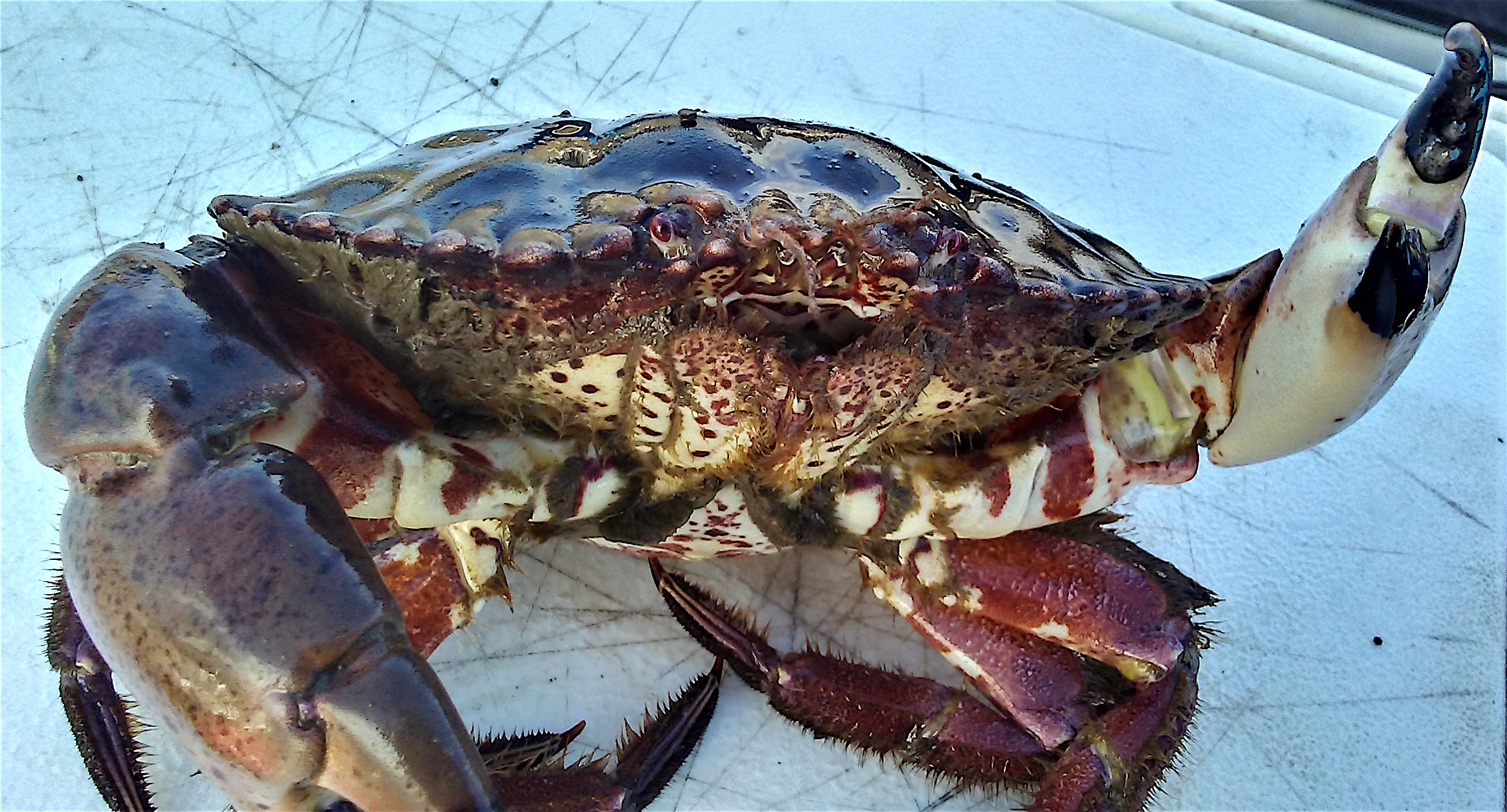
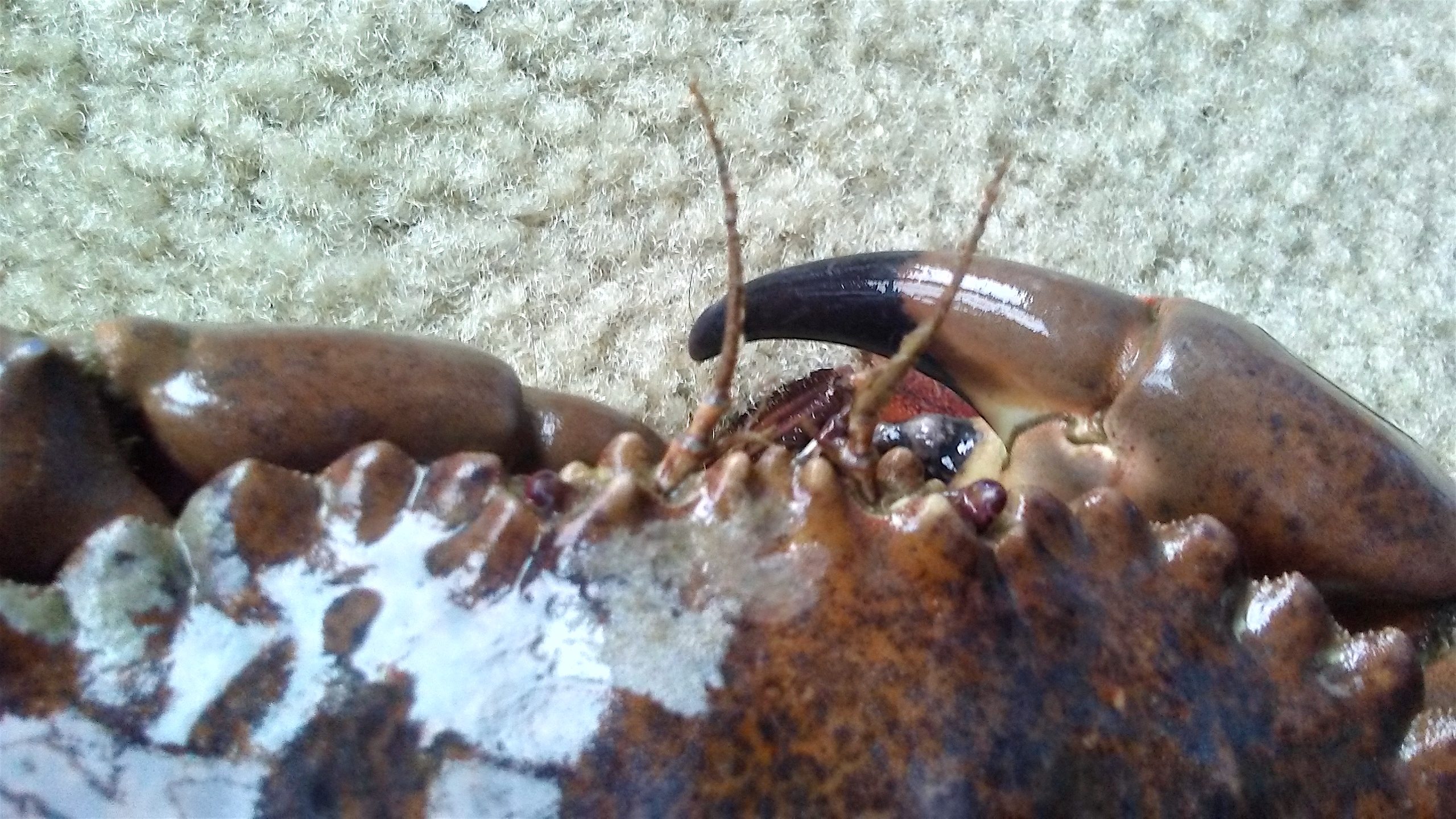 Subphylum Crustacea (Crustaceans) — Order Decapoda (Crabs, Lobster, Shrimp) — Family Cancridae (Cancer Crabs) — Genus Cancer
Subphylum Crustacea (Crustaceans) — Order Decapoda (Crabs, Lobster, Shrimp) — Family Cancridae (Cancer Crabs) — Genus Cancer
Species: Cancer antennarium (Stimpson, 1856). (Alternate proposed scientific name Romaleon antennarium). Antennarium — Latin for “antennae” in reference to the large antennae, larger than those of other species in the family.
Alternate Name: Pacific rock crab, California rock crab, brown rock crab or just plain rock crab.
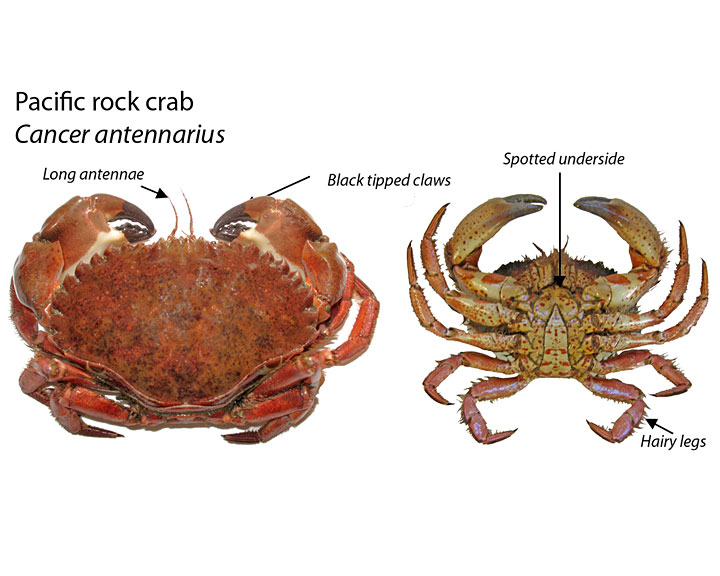
Identification: Rock crabs have a wide, hard shell with black-tipped pincers on claws that are large and smooth. Distinctive are the antennae that begin between the eyestalks and are the longest of these various species. The tip of the last segment of the tail flap is pointed in both male and female. The coloring is generally medium to dark red-brown or orange, usually mottled with a lighter grayish tinge. The undersides are yellowish white with a number of small distinct red spots that help distinguish this species since they are not seen on the other species. In the female, the red spots on the tail flap are usually blocked out by a general red coloration, but the spots can be found on the legs and the underside of the shell. Red crabs have red blotching’s on the underside but not the distinct spots seen in rock crabs.
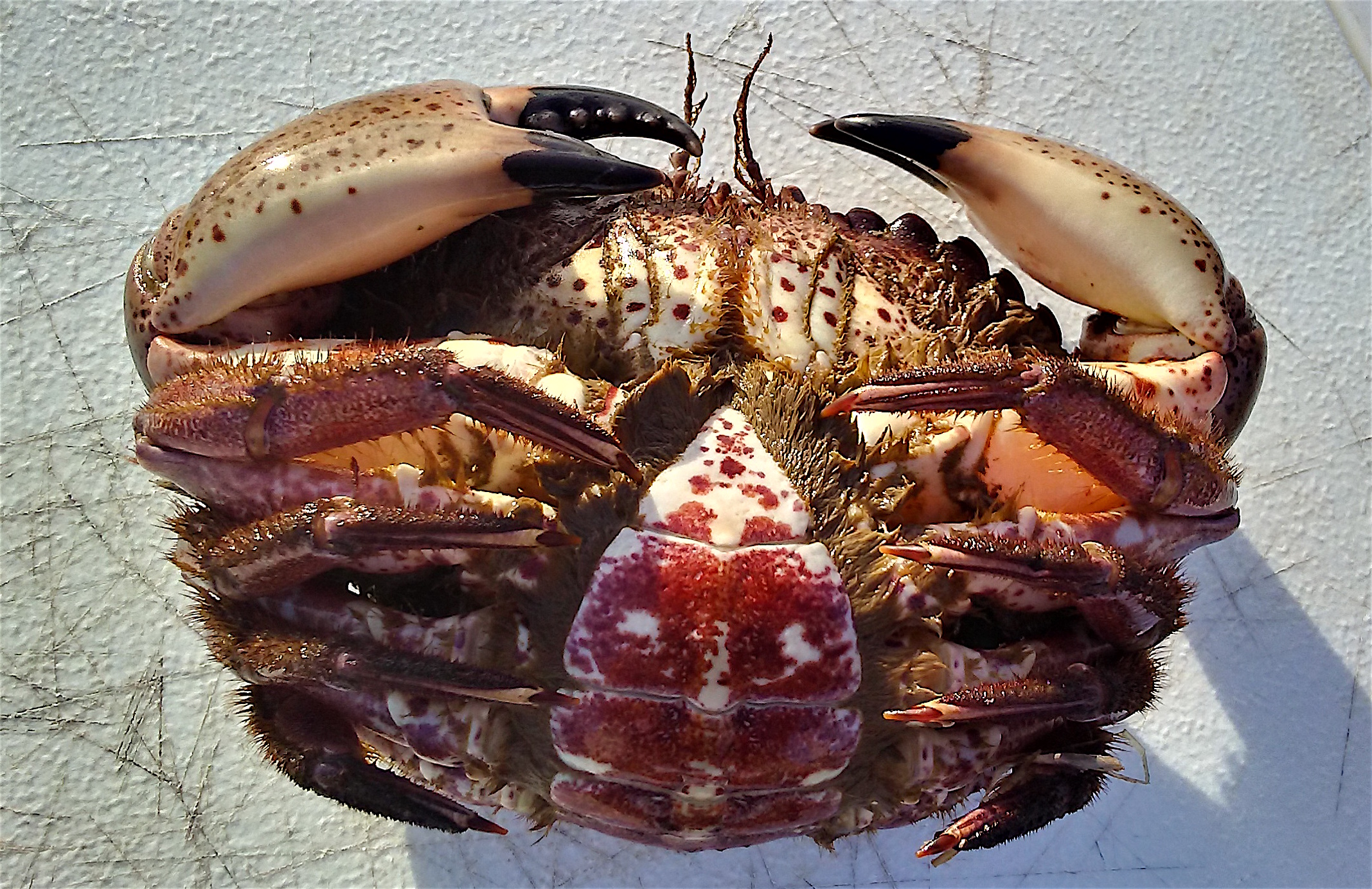
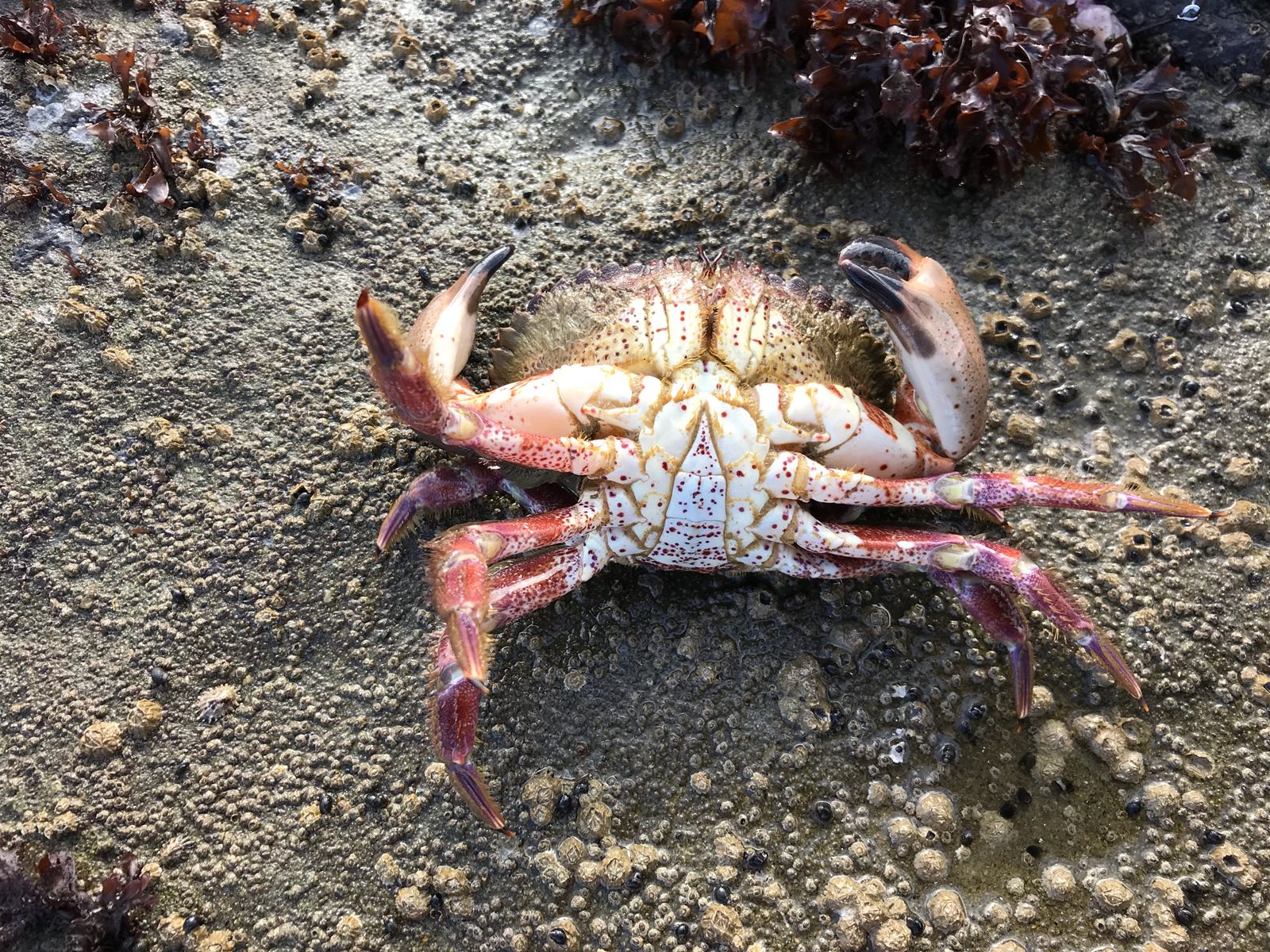
Brown crabs, note spotting on underside — Pictures courtesy of Martin Bragado

A brown crab with longer antennae and a slightly different shaped head than the red crab below — Pictures courtesy of Martin Bragado
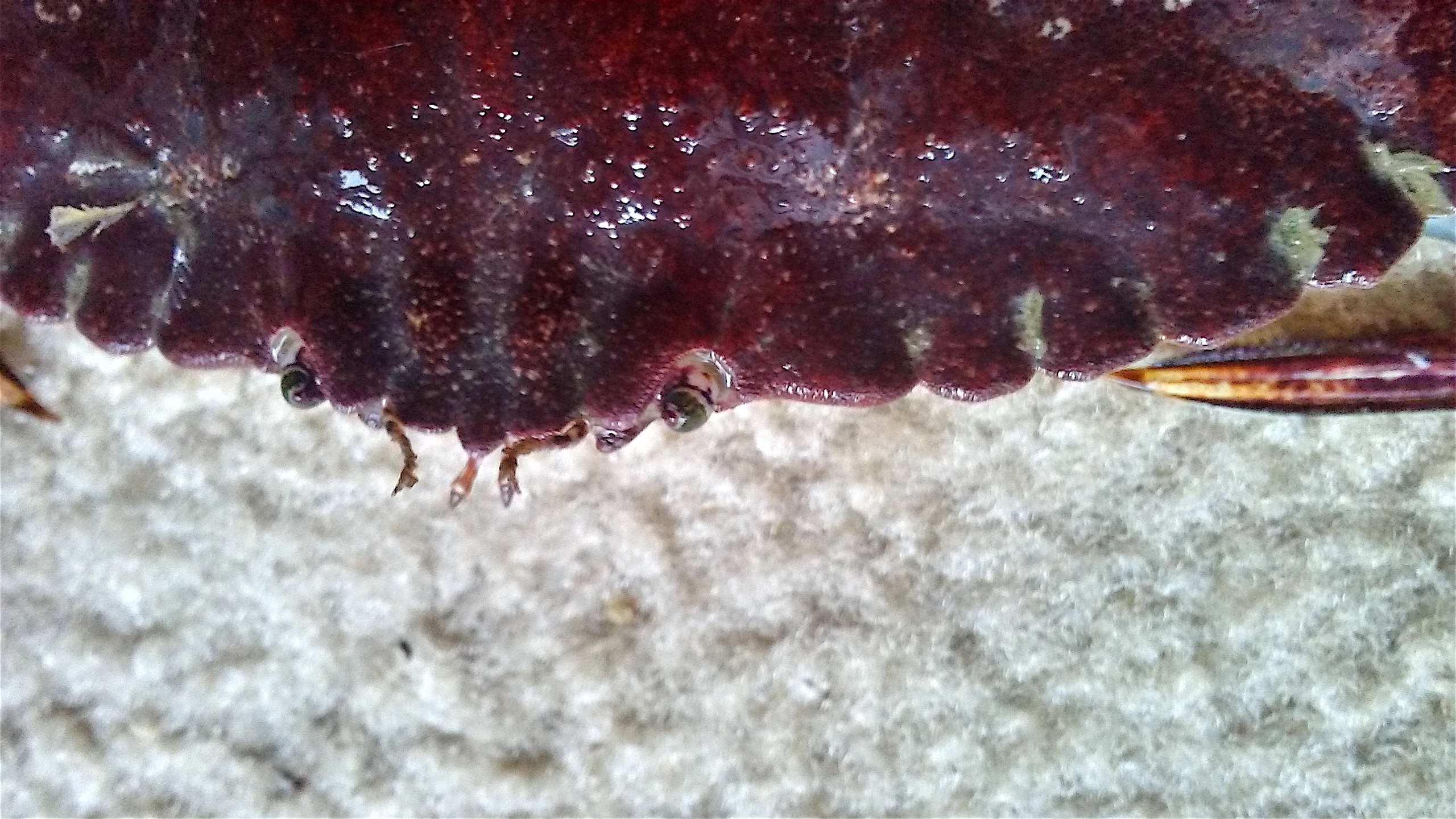
A red crab showing the smaller (and shorter) antennae as well as the slightly triangular shape between the eyes — Pictures courtesy of Martin Bragado
Size: Males to 7 inches across the back, females to 5.8 inches.
Range: Cabo San Lucas, Baja California, to Virago Sound, Queen Charlotte Islands, British Columbia. Most abundant from Mexico to the San Francisco Bay area and numerically probably the number one “rock crab” in central California.
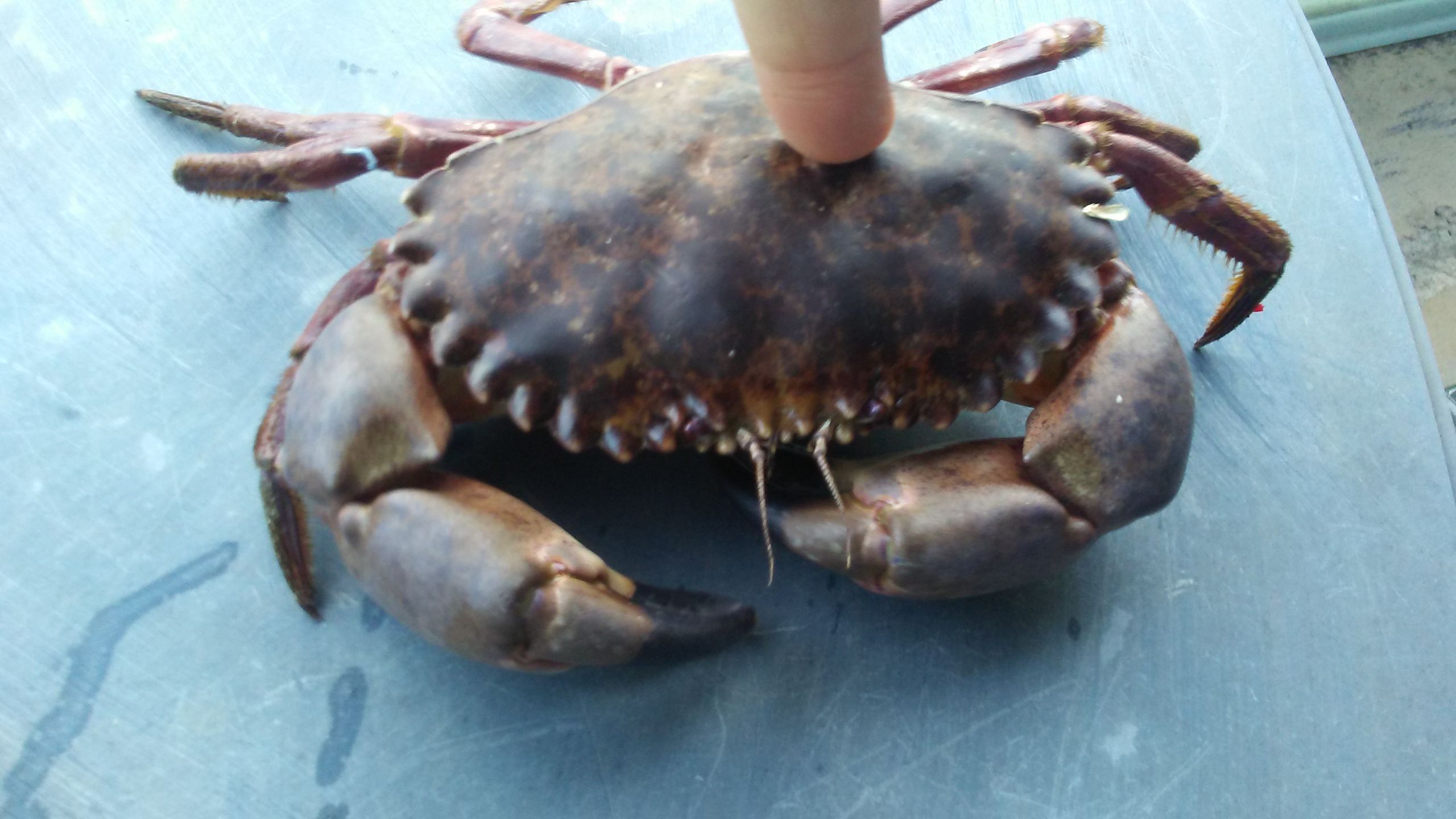
Brown crab — Picture courtesy of Martin Bragado
Habitat: Although recorded from the low intertidal zone down to a depth of 330 feet, primarily lives in shallow inshore environments—on sand, mud, gravel, and rock substrata in estuarine and coastal shelf areas. Rock crabs do not tolerate brackish conditions as well as some other crabs. Rock crabs feed by means of scavenging and predation with a large diet that consists of bivalves, snails and echinoderms, as well as other crustaceans such as hermit crabs. Sensitivity to the odor of food serves as a major means of locating food. Many of the small rock crabs seen snapping and seemingly blowing bubbles, in tidepools and around rocks, will be small members of this species.
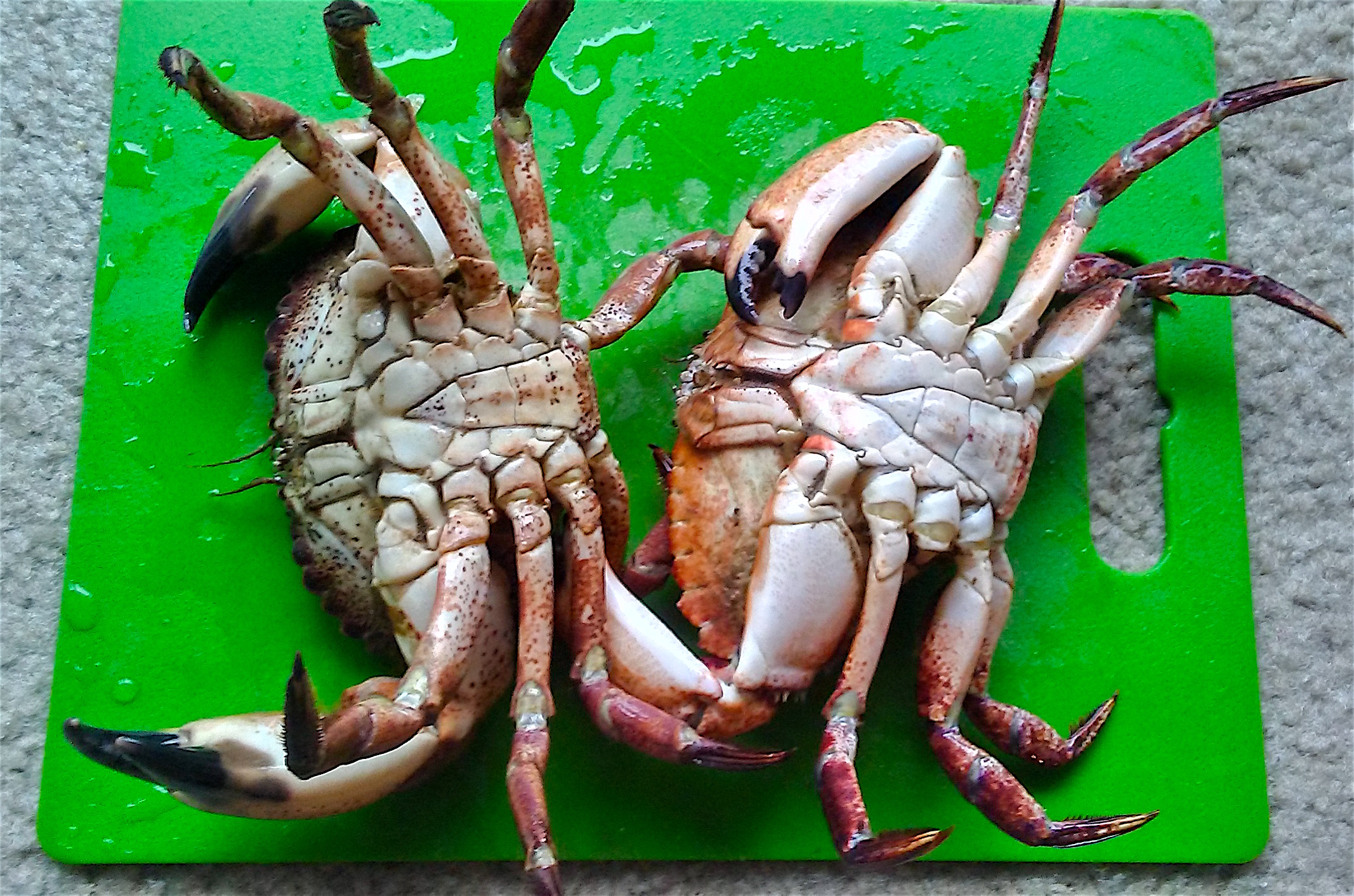
Brorw rock crab (left), red rock crab (right) — Picture courtesy Martin Bragado
Piers: Found at most piers from Avila north to Sonoma County. Best bets: Port San Luis Pier, Santa Cruz Wharf, Fort Point Pier, San Francisco Municipal Pier, Fort Baker Pier, Lawson’s Landing Pier, and several piers in Tomales Bay and Bodega Harbor. Although very common to piers in Morro Bay, and a long time sport for local anglers, crabs (or any other invertebrates) may no longer be taken due to the Morro Bay State Marine Recreational Management Area closure.
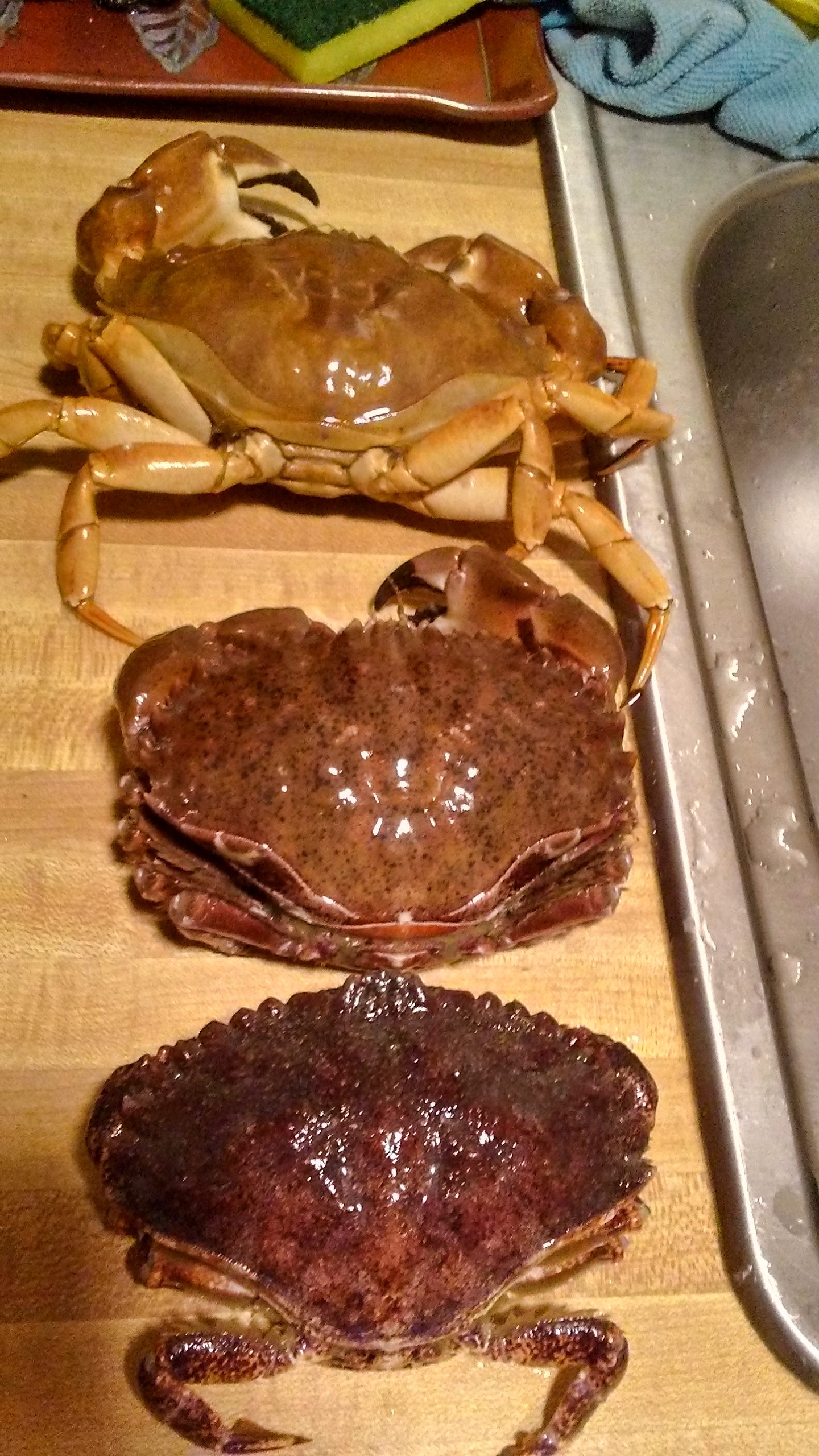
A trifecta of crabs caught by Martin Bragado at the Pacifica Pier. A yellow rock crab, a brown rock crab, and a red rock crab.
Shoreline: Readily available inshore but the rocky areas they typically inhabit make it hard to use both hoops and snares.
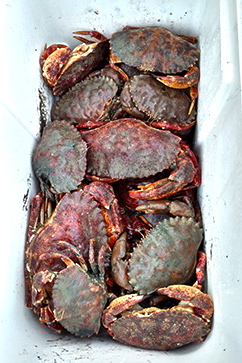 Boats: Available to boaters in rocky areas but generally they take a backseat to those seeking out Dungeness crabs.
Boats: Available to boaters in rocky areas but generally they take a backseat to those seeking out Dungeness crabs.
Bait and Tackle: Hoop nets and crab snares.
Food Value: Although sport fishermen are able to catch large numbers of these crabs, commercial fishermen land few. Rock crabs yield a lower amount of flesh than Dungeness (almost all is found in the claws and legs) but the meat has a slightly sweet, delicate flavor that is delicious.
See the following for more information and recipes:
https://www.pierfishing.com/msgboard/index.php?threads/recipes-for-crabs-%E2%80%94-dungeness-red-crabs-rock-crabs-and-spider-crabs.275/
Comments: Since Dungeness crabs and red crabs reach the largest size and yield the most meat, they are the preferred species. However, rock crabs are the most numerous crab caught by pier anglers in central California. Note: the proposed species name is Romaleon not Romulan, these crabs did not come from the planet Romulus nor are they related to Vulcans.
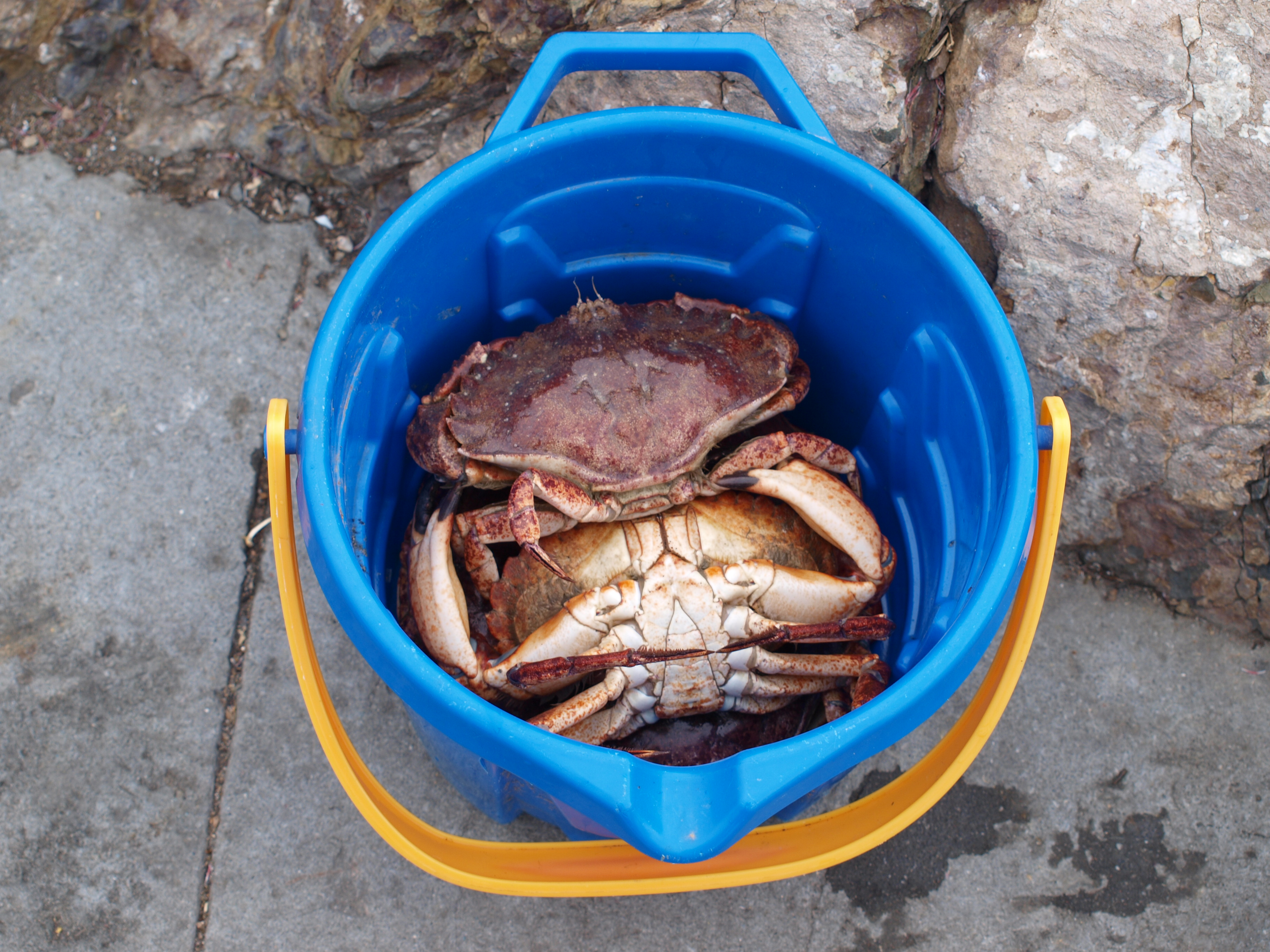
Crabs are sometimes hard to distinguish from a picture. This pail of crabs at the Elephant Rock Pier appears to contain both brown rock crabs Cancer antennarium and red rock crabs Cancer produtus but it’s hard to tell. The top crab although having long antennae characteristic of Antennarium seems to have the carapace of a Produtus. The one on its back, given a lack of spots, definitely seems to be a Produtus.
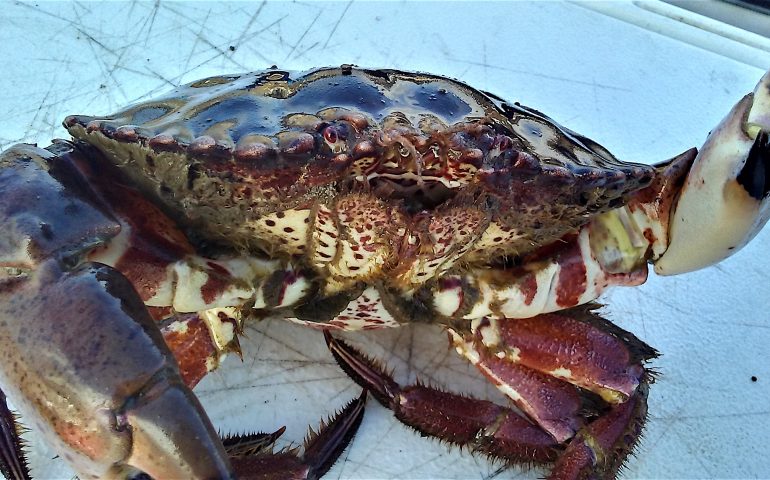
Question:
Why does the state’s California Fish and Wildlife
continue to protect the Dungeness population
over the California Rock Crab, by advocating
killing the species, rather than harvesting
a pincer and letting the animals go, to regrow
a replacement, which can be harvested
again, as is the practice for the Stone Crab,
which is similar in appearance and found in
all of the Gulf States and a million dollar industry
for the state of Florida?
You would have to ask the state that question but I am not sure what works for the stone crab, harvesting a pincer, would also work for a rock crab. I would imagine it would be much less able to ward off various predators and /or to feed on its own.
In the Monterey Bay area where I grew up, local fishermen (not commercial) have been breaking off a claw and throwing the crab back to regenerate a new one for at least the past century. It is a practice that has been handed down for generations, despite the “law” which many remain unaware of. And while I fully understand that ignorance of the law is no excuse, the practice is logical and the ultimate in animal husbandry and recognizing the importance of marine environmental awareness.
What month do you think it would be easiest to catch crabs in the SF bay and how long would you need your trap down?
A consideration on taking one claw… It takes a rock crab several molts to get a claw back, and by the time the crab is large enough for you to want a claw, they probably only have a couple molts left. With only one claw, a large male rock crab is effectively removed from the gene pool (can’t embrace and defend a mate) and won’t be as effective and eating (they can use one claw to handle prey and another to tear at it). The crab may also bleed out since having a claw ripped off isn’t always the same as when they lose one in nature. at least a quarter of the Florida stone crabs you mentioned die after their claw is taken. You’re not doing the crab any favors or increasing the total number of big claws in the sea, so you might as well take the whole crab and enjoy both claws.
Also the second regrown claw is MUCH smaller than the original claw.
That makes sense to me. Why would I want to damage any
Animal, that’s just abuse to rip off a claw, like declawing a cat is abuse, taking away its ability to defend itself, same with the crab, I’d just rather take the whole crab rather than injure it.
It just seems to me that ripping off a claw would kill the crab because it would bleed out., or attract the attention of predators at a time when its not able to defend itself. And why would I care what they do in Florida when this is California. It’s true all coastal water areas have the same ideas about keeping their waters stocked
and not allowing overfishing. Here in the Southern half of the state you won’t find a Dungenous crab, I wish they could be found here, I have a friend in Washington who gets fantastic yields going out on their boat, and I’m just starting out but her boyfriend has already given me some great tips for crabbing.
He doesn’t rip claws off either. And I know my son won’t go for the idea at all.
Sounds like rataining the entire crab rather than a single claw may be a more humane way to harvest
That’s terrific!
I had no idea rock crabs were so fascinating! It’s always interesting to learn about different species and their habitats. Thanks for sharing such detailed info! Also, if you enjoy discovering cool things, check out LionModApk for free MOD APK games and apps!